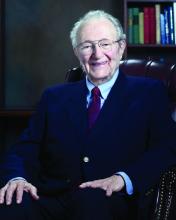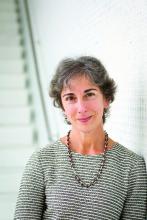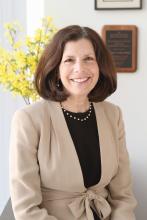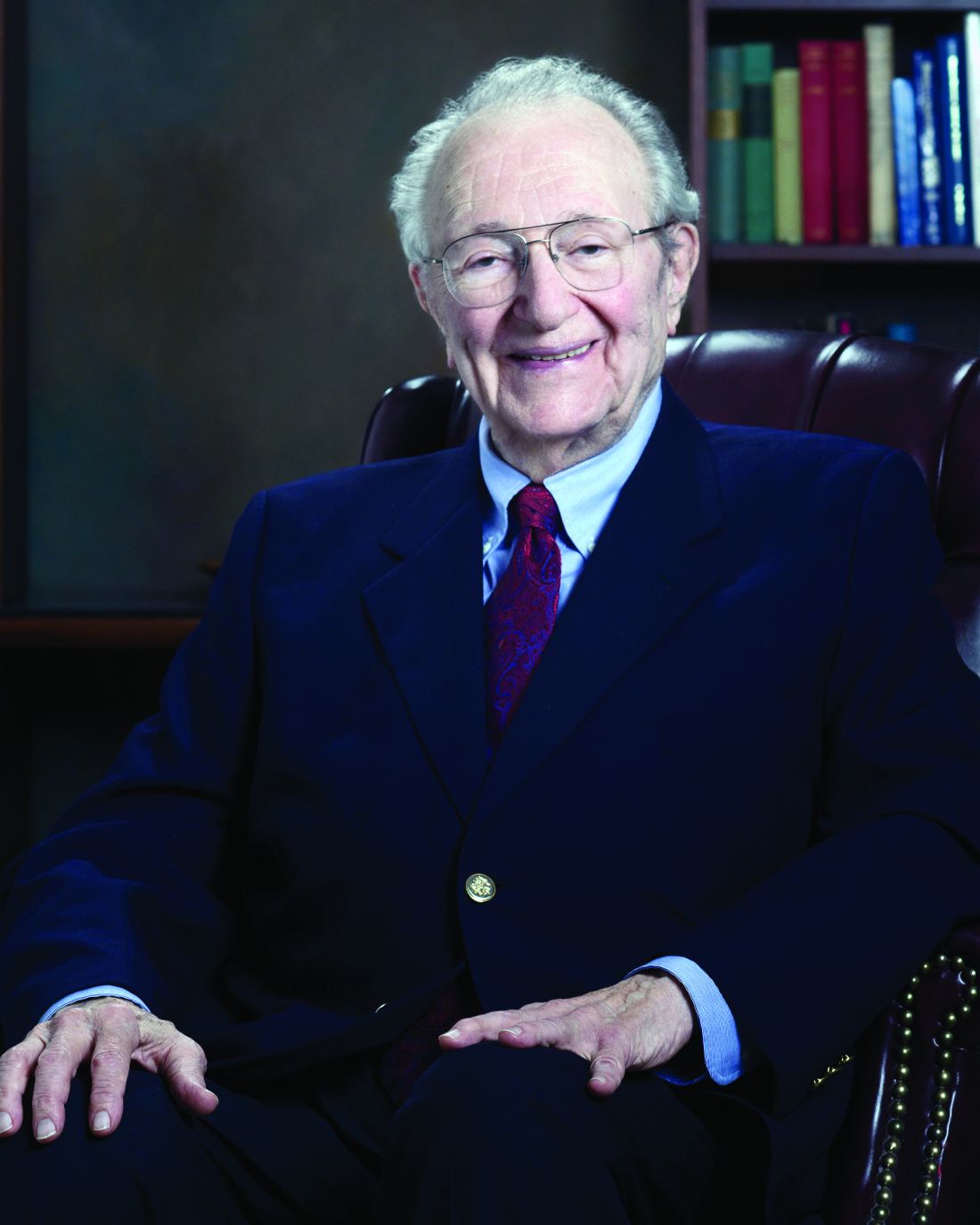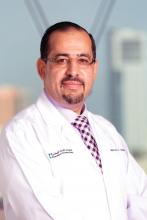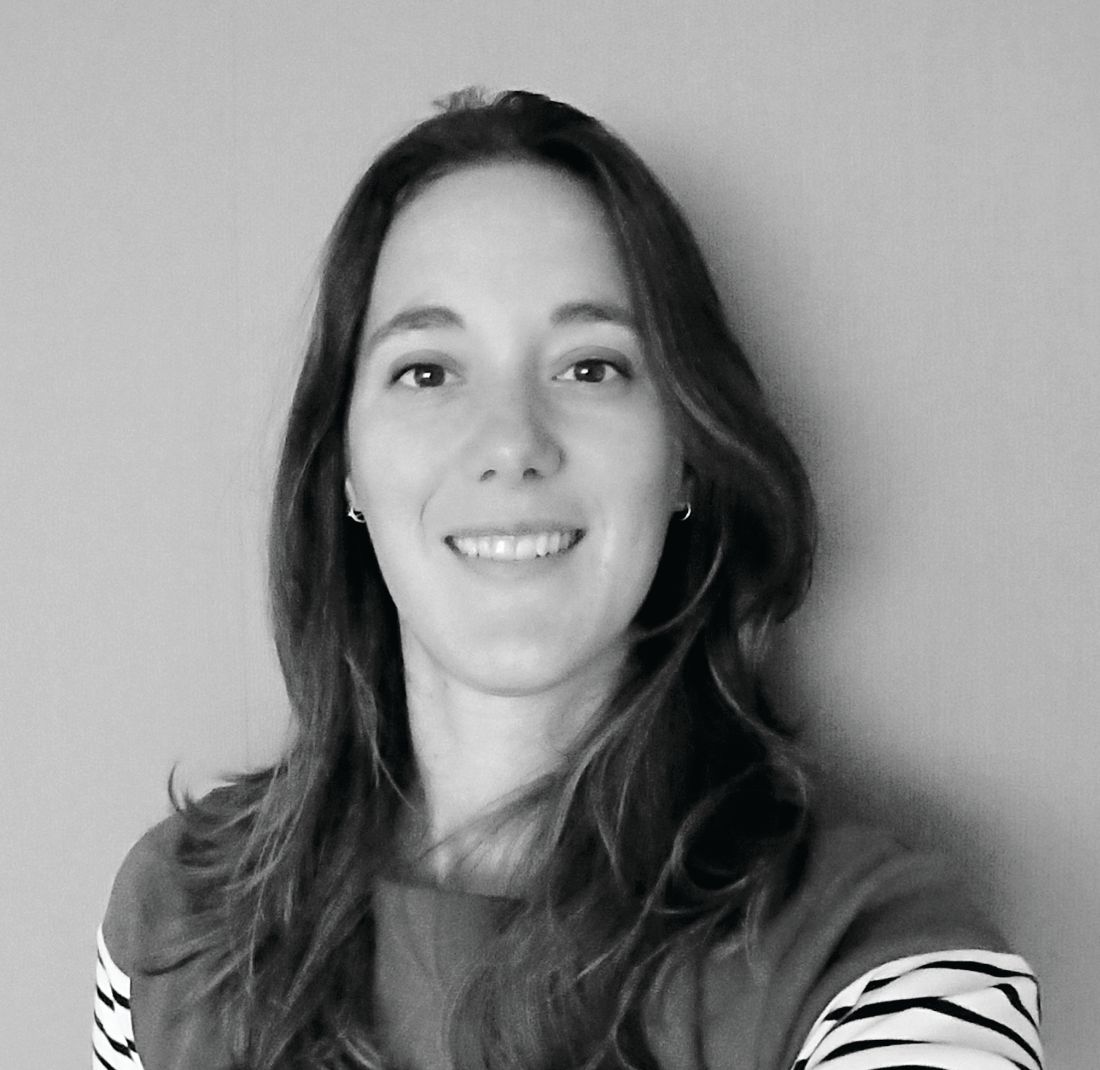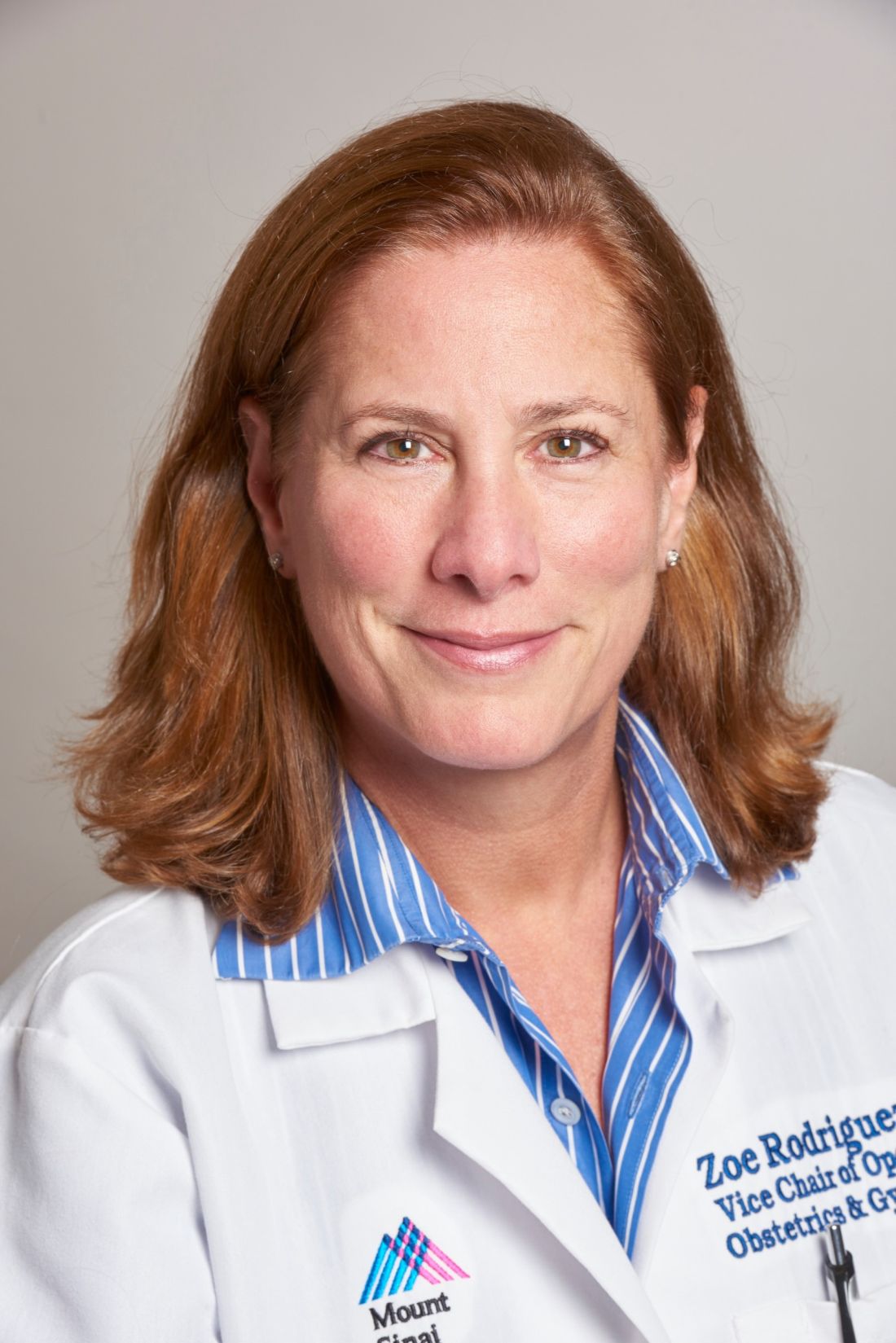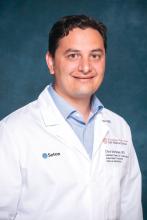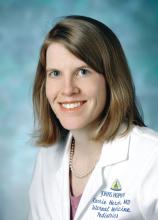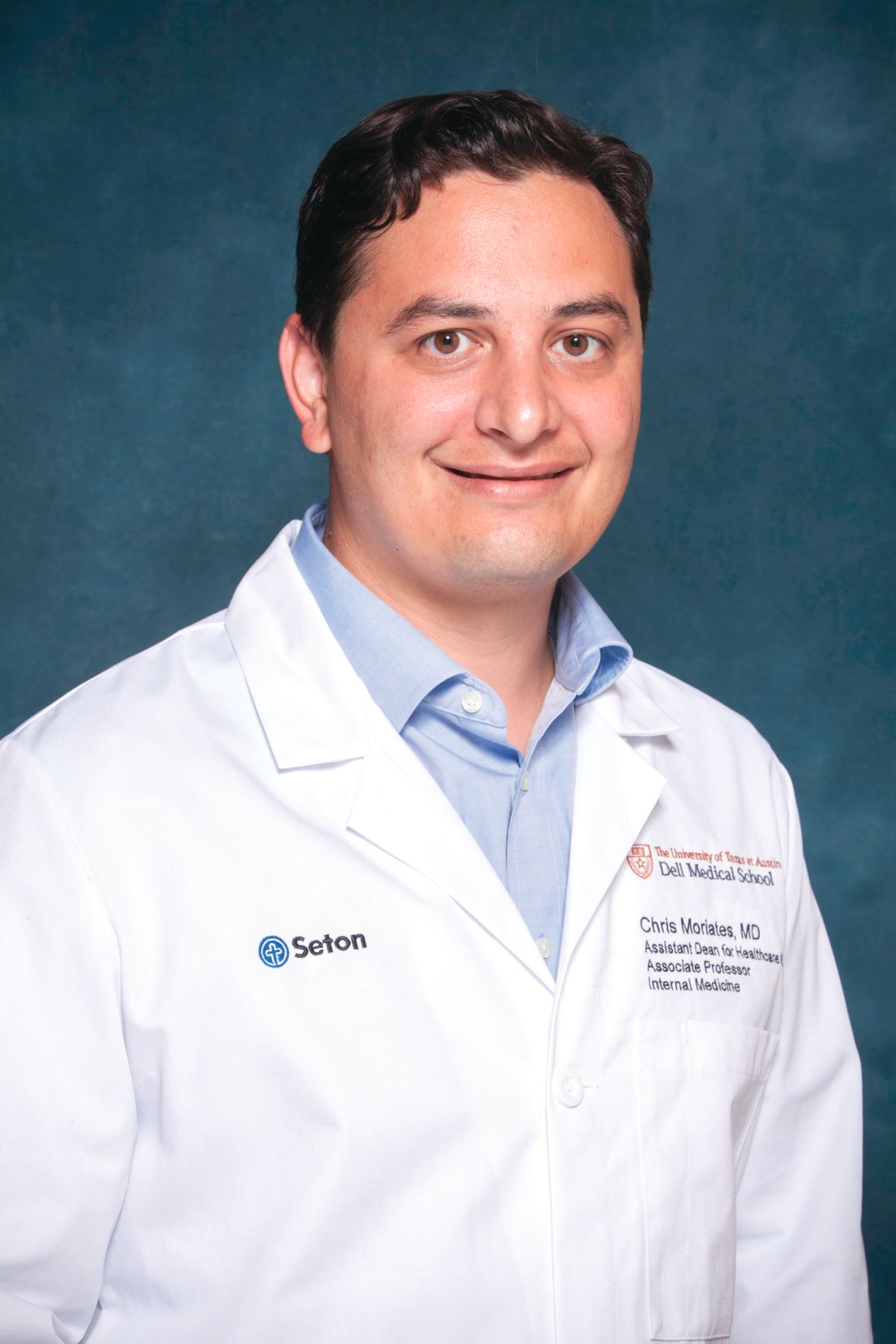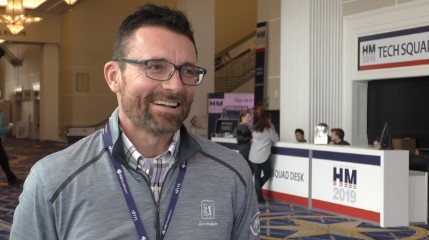User login
Cancer researchers take home AACR honors
The American Association for Cancer Research (AACR) has granted 14 awards and lectureships to cancer researchers and plans to recognize the recipients at the annual meeting of the American Association for Cancer Research.
Emil J. Freireich, MD, of the University of Texas MD Anderson Cancer Center in Houston, has won the 16th AACR Award for Lifetime Achievement in Cancer Research. AACR cited Dr. Freireich’s contributions related to leukocyte and allogeneic platelet transfusions, engraftment of peripheral blood stem cells, and combination chemotherapy approaches in the treatment of childhood leukemia. Dr. Freireich will receive the award during the opening ceremony of the meeting on March 31.
Another award to be given at the opening ceremony is the 13th Margaret Foti Award for Leadership and Extraordinary Achievements in Cancer Research. Raymond N. DuBois, MD, PhD, of the Medical University of South Carolina in Charleston, will receive the award for his contributions to the “early detection, interception, and prevention of colorectal cancer.” This includes elucidating the role of prostaglandins and cyclooxygenase in colon cancer tumorigenesis and pioneering the use of nonsteroidal anti-inflammatory mediators for cancer prevention. Dr. DuBois will deliver the lecture “Inflammation and Inflammatory Mediators as Potential Targets for Cancer Prevention or Interception” on April 1.
Jennifer R. Grandis, MD, of the University of California, San Francisco, has won the 22nd AACR–Women in Cancer Research Charlotte Friend Memorial Lectureship. Dr. Grandis characterized the role of EGFR, STAT3, and other signaling pathways in head and neck squamous cell carcinoma and used the findings to uncover new treatment options. Dr. Grandis will deliver her award lecture, “Leveraging Biologic Insights to Prevent and Treat Head and Neck Cancer,” on March 30.
John M. Carethers, MD, of the University of Michigan in Ann Arbor, has won the 14th AACR–Minorities in Cancer Research Jane Cooke Wright Memorial Lectureship. Dr. Carethers is being recognized for his work related to DNA mismatch repair, tumor resistance, inflammation, and health disparities in colorectal cancer patients. He will deliver his award lecture, “A Role for Inflammation-Induced DNA Mismatch Repair Deficits in Racial Outcomes from Advanced Colorectal Cancer,” on March 31.
Susan L. Cohn, MD, of the University of Chicago, has won the 24th AACR–Joseph H. Burchenal Memorial Award for Outstanding Achievement in Clinical Cancer Research (supported by Bristol-Myers Squibb). She won this award for her work in refining pediatric cancer risk-group classification, making discoveries that changed treatment strategies, and creating computational frameworks that enabled data collection and sharing. Dr. Cohn will deliver her award lecture, “Advancing Treatment Through Collaboration: A Pediatric Oncology Paradigm,” on April 2.
Another awardee to be recognized at the meeting is Alberto Mantovani, MD, a professor at Humanitas University in Milan, Italy, who won the 22nd Pezcoller Foundation–AACR International Award for Extraordinary Achievement in Cancer Research (supported by the Pezcoller Foundation).
Jeffrey A. Bluestone, PhD, of the University of California, San Francisco, won the 15th AACR–Irving Weinstein Foundation Distinguished Lecture (supported by the Irving Weinstein Foundation).
Andrew T. Chan, MD, of Massachusetts General Hospital in Boston, won the Third AACR–Waun Ki Hong Award for Outstanding Achievement in Translational and Clinical Cancer Research.
Elaine Fuchs, PhD, of Rockefeller University in New York, won the 59th AACR G.H.A. Clowes Memorial Award (supported by Lilly Oncology).
Charles L. Sawyers, MD, of the Memorial Sloan Kettering Cancer Center in New York, won the 13th AACR Princess Takamatsu Memorial Lectureship (supported by the Princess Takamatsu Cancer Research Fund).
Michael E. Jung, PhD, of the University of California, Los Angeles, won the 13th AACR Award for Outstanding Achievement in Chemistry in Cancer Research.
Cornelis J.M. Melief, MD, PhD, of Leiden (the Netherlands) University Medical Center and ISA Pharmaceuticals, also in Leiden, won the Seventh AACR–Cancer Research Institute Lloyd J. Old Award in Cancer Immunology (supported by the Cancer Research Institute).
Edward L. Giovannucci, MD, of the Harvard T.H. Chan School of Public Health in Boston, won the 28th AACR-American Cancer Society Award for Research Excellence in Cancer Epidemiology and Prevention (supported by the American Cancer Society).
Melissa M. Hudson, MD, and 15 other researchers from St. Jude Children’s Research Hospital in Memphis won the 13th AACR Team Science Award (supported by Lilly Oncology).
Movers in Medicine highlights career moves and personal achievements by hematologists and oncologists. Did you switch jobs, take on a new role, climb a mountain? Tell us all about it at [email protected], and you could be featured in Movers in Medicine.
The American Association for Cancer Research (AACR) has granted 14 awards and lectureships to cancer researchers and plans to recognize the recipients at the annual meeting of the American Association for Cancer Research.
Emil J. Freireich, MD, of the University of Texas MD Anderson Cancer Center in Houston, has won the 16th AACR Award for Lifetime Achievement in Cancer Research. AACR cited Dr. Freireich’s contributions related to leukocyte and allogeneic platelet transfusions, engraftment of peripheral blood stem cells, and combination chemotherapy approaches in the treatment of childhood leukemia. Dr. Freireich will receive the award during the opening ceremony of the meeting on March 31.
Another award to be given at the opening ceremony is the 13th Margaret Foti Award for Leadership and Extraordinary Achievements in Cancer Research. Raymond N. DuBois, MD, PhD, of the Medical University of South Carolina in Charleston, will receive the award for his contributions to the “early detection, interception, and prevention of colorectal cancer.” This includes elucidating the role of prostaglandins and cyclooxygenase in colon cancer tumorigenesis and pioneering the use of nonsteroidal anti-inflammatory mediators for cancer prevention. Dr. DuBois will deliver the lecture “Inflammation and Inflammatory Mediators as Potential Targets for Cancer Prevention or Interception” on April 1.
Jennifer R. Grandis, MD, of the University of California, San Francisco, has won the 22nd AACR–Women in Cancer Research Charlotte Friend Memorial Lectureship. Dr. Grandis characterized the role of EGFR, STAT3, and other signaling pathways in head and neck squamous cell carcinoma and used the findings to uncover new treatment options. Dr. Grandis will deliver her award lecture, “Leveraging Biologic Insights to Prevent and Treat Head and Neck Cancer,” on March 30.
John M. Carethers, MD, of the University of Michigan in Ann Arbor, has won the 14th AACR–Minorities in Cancer Research Jane Cooke Wright Memorial Lectureship. Dr. Carethers is being recognized for his work related to DNA mismatch repair, tumor resistance, inflammation, and health disparities in colorectal cancer patients. He will deliver his award lecture, “A Role for Inflammation-Induced DNA Mismatch Repair Deficits in Racial Outcomes from Advanced Colorectal Cancer,” on March 31.
Susan L. Cohn, MD, of the University of Chicago, has won the 24th AACR–Joseph H. Burchenal Memorial Award for Outstanding Achievement in Clinical Cancer Research (supported by Bristol-Myers Squibb). She won this award for her work in refining pediatric cancer risk-group classification, making discoveries that changed treatment strategies, and creating computational frameworks that enabled data collection and sharing. Dr. Cohn will deliver her award lecture, “Advancing Treatment Through Collaboration: A Pediatric Oncology Paradigm,” on April 2.
Another awardee to be recognized at the meeting is Alberto Mantovani, MD, a professor at Humanitas University in Milan, Italy, who won the 22nd Pezcoller Foundation–AACR International Award for Extraordinary Achievement in Cancer Research (supported by the Pezcoller Foundation).
Jeffrey A. Bluestone, PhD, of the University of California, San Francisco, won the 15th AACR–Irving Weinstein Foundation Distinguished Lecture (supported by the Irving Weinstein Foundation).
Andrew T. Chan, MD, of Massachusetts General Hospital in Boston, won the Third AACR–Waun Ki Hong Award for Outstanding Achievement in Translational and Clinical Cancer Research.
Elaine Fuchs, PhD, of Rockefeller University in New York, won the 59th AACR G.H.A. Clowes Memorial Award (supported by Lilly Oncology).
Charles L. Sawyers, MD, of the Memorial Sloan Kettering Cancer Center in New York, won the 13th AACR Princess Takamatsu Memorial Lectureship (supported by the Princess Takamatsu Cancer Research Fund).
Michael E. Jung, PhD, of the University of California, Los Angeles, won the 13th AACR Award for Outstanding Achievement in Chemistry in Cancer Research.
Cornelis J.M. Melief, MD, PhD, of Leiden (the Netherlands) University Medical Center and ISA Pharmaceuticals, also in Leiden, won the Seventh AACR–Cancer Research Institute Lloyd J. Old Award in Cancer Immunology (supported by the Cancer Research Institute).
Edward L. Giovannucci, MD, of the Harvard T.H. Chan School of Public Health in Boston, won the 28th AACR-American Cancer Society Award for Research Excellence in Cancer Epidemiology and Prevention (supported by the American Cancer Society).
Melissa M. Hudson, MD, and 15 other researchers from St. Jude Children’s Research Hospital in Memphis won the 13th AACR Team Science Award (supported by Lilly Oncology).
Movers in Medicine highlights career moves and personal achievements by hematologists and oncologists. Did you switch jobs, take on a new role, climb a mountain? Tell us all about it at [email protected], and you could be featured in Movers in Medicine.
The American Association for Cancer Research (AACR) has granted 14 awards and lectureships to cancer researchers and plans to recognize the recipients at the annual meeting of the American Association for Cancer Research.
Emil J. Freireich, MD, of the University of Texas MD Anderson Cancer Center in Houston, has won the 16th AACR Award for Lifetime Achievement in Cancer Research. AACR cited Dr. Freireich’s contributions related to leukocyte and allogeneic platelet transfusions, engraftment of peripheral blood stem cells, and combination chemotherapy approaches in the treatment of childhood leukemia. Dr. Freireich will receive the award during the opening ceremony of the meeting on March 31.
Another award to be given at the opening ceremony is the 13th Margaret Foti Award for Leadership and Extraordinary Achievements in Cancer Research. Raymond N. DuBois, MD, PhD, of the Medical University of South Carolina in Charleston, will receive the award for his contributions to the “early detection, interception, and prevention of colorectal cancer.” This includes elucidating the role of prostaglandins and cyclooxygenase in colon cancer tumorigenesis and pioneering the use of nonsteroidal anti-inflammatory mediators for cancer prevention. Dr. DuBois will deliver the lecture “Inflammation and Inflammatory Mediators as Potential Targets for Cancer Prevention or Interception” on April 1.
Jennifer R. Grandis, MD, of the University of California, San Francisco, has won the 22nd AACR–Women in Cancer Research Charlotte Friend Memorial Lectureship. Dr. Grandis characterized the role of EGFR, STAT3, and other signaling pathways in head and neck squamous cell carcinoma and used the findings to uncover new treatment options. Dr. Grandis will deliver her award lecture, “Leveraging Biologic Insights to Prevent and Treat Head and Neck Cancer,” on March 30.
John M. Carethers, MD, of the University of Michigan in Ann Arbor, has won the 14th AACR–Minorities in Cancer Research Jane Cooke Wright Memorial Lectureship. Dr. Carethers is being recognized for his work related to DNA mismatch repair, tumor resistance, inflammation, and health disparities in colorectal cancer patients. He will deliver his award lecture, “A Role for Inflammation-Induced DNA Mismatch Repair Deficits in Racial Outcomes from Advanced Colorectal Cancer,” on March 31.
Susan L. Cohn, MD, of the University of Chicago, has won the 24th AACR–Joseph H. Burchenal Memorial Award for Outstanding Achievement in Clinical Cancer Research (supported by Bristol-Myers Squibb). She won this award for her work in refining pediatric cancer risk-group classification, making discoveries that changed treatment strategies, and creating computational frameworks that enabled data collection and sharing. Dr. Cohn will deliver her award lecture, “Advancing Treatment Through Collaboration: A Pediatric Oncology Paradigm,” on April 2.
Another awardee to be recognized at the meeting is Alberto Mantovani, MD, a professor at Humanitas University in Milan, Italy, who won the 22nd Pezcoller Foundation–AACR International Award for Extraordinary Achievement in Cancer Research (supported by the Pezcoller Foundation).
Jeffrey A. Bluestone, PhD, of the University of California, San Francisco, won the 15th AACR–Irving Weinstein Foundation Distinguished Lecture (supported by the Irving Weinstein Foundation).
Andrew T. Chan, MD, of Massachusetts General Hospital in Boston, won the Third AACR–Waun Ki Hong Award for Outstanding Achievement in Translational and Clinical Cancer Research.
Elaine Fuchs, PhD, of Rockefeller University in New York, won the 59th AACR G.H.A. Clowes Memorial Award (supported by Lilly Oncology).
Charles L. Sawyers, MD, of the Memorial Sloan Kettering Cancer Center in New York, won the 13th AACR Princess Takamatsu Memorial Lectureship (supported by the Princess Takamatsu Cancer Research Fund).
Michael E. Jung, PhD, of the University of California, Los Angeles, won the 13th AACR Award for Outstanding Achievement in Chemistry in Cancer Research.
Cornelis J.M. Melief, MD, PhD, of Leiden (the Netherlands) University Medical Center and ISA Pharmaceuticals, also in Leiden, won the Seventh AACR–Cancer Research Institute Lloyd J. Old Award in Cancer Immunology (supported by the Cancer Research Institute).
Edward L. Giovannucci, MD, of the Harvard T.H. Chan School of Public Health in Boston, won the 28th AACR-American Cancer Society Award for Research Excellence in Cancer Epidemiology and Prevention (supported by the American Cancer Society).
Melissa M. Hudson, MD, and 15 other researchers from St. Jude Children’s Research Hospital in Memphis won the 13th AACR Team Science Award (supported by Lilly Oncology).
Movers in Medicine highlights career moves and personal achievements by hematologists and oncologists. Did you switch jobs, take on a new role, climb a mountain? Tell us all about it at [email protected], and you could be featured in Movers in Medicine.
United States now over 300 measles cases for the year
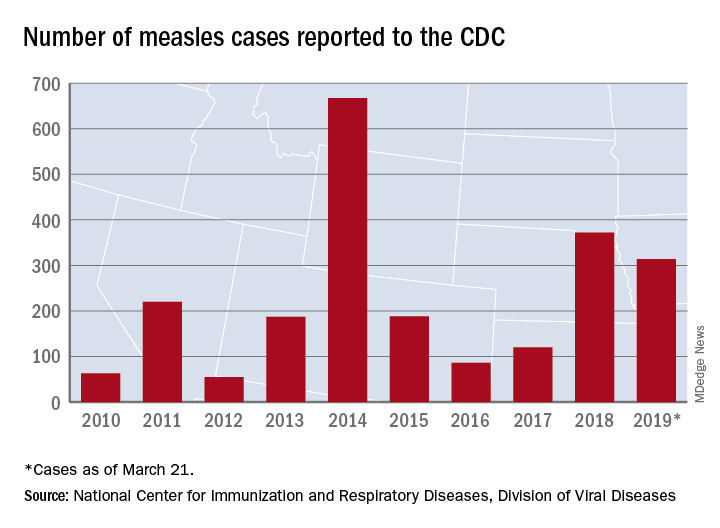
Despite those 46 new cases, the number of states with reported cases remains at 15, the CDC reported March 25.
For the fifth consecutive week the busiest outbreak was in Brooklyn, N.Y., which added 23 new cases. New York’s Rockland County, which is just north of New York City and has 46 confirmed cases for the year, is home to another of the six current outbreaks in the country, with the other four located in Washington (74 total cases for the state), Texas (14 cases), California (7 cases), and Illinois (6 cases). Other states with cases are Arizona, Colorado, Connecticut, Georgia, Kentucky, Missouri, New Hampshire, New Jersey, and Oregon, reported the CDC.
This year’s case total through less than 3 months is nearing the 372 that occurred in 2018, which was the second-worst year for measles in the last decade, but is still well off the 10-year high of 667 reported in 2014, the CDC said.

Despite those 46 new cases, the number of states with reported cases remains at 15, the CDC reported March 25.
For the fifth consecutive week the busiest outbreak was in Brooklyn, N.Y., which added 23 new cases. New York’s Rockland County, which is just north of New York City and has 46 confirmed cases for the year, is home to another of the six current outbreaks in the country, with the other four located in Washington (74 total cases for the state), Texas (14 cases), California (7 cases), and Illinois (6 cases). Other states with cases are Arizona, Colorado, Connecticut, Georgia, Kentucky, Missouri, New Hampshire, New Jersey, and Oregon, reported the CDC.
This year’s case total through less than 3 months is nearing the 372 that occurred in 2018, which was the second-worst year for measles in the last decade, but is still well off the 10-year high of 667 reported in 2014, the CDC said.

Despite those 46 new cases, the number of states with reported cases remains at 15, the CDC reported March 25.
For the fifth consecutive week the busiest outbreak was in Brooklyn, N.Y., which added 23 new cases. New York’s Rockland County, which is just north of New York City and has 46 confirmed cases for the year, is home to another of the six current outbreaks in the country, with the other four located in Washington (74 total cases for the state), Texas (14 cases), California (7 cases), and Illinois (6 cases). Other states with cases are Arizona, Colorado, Connecticut, Georgia, Kentucky, Missouri, New Hampshire, New Jersey, and Oregon, reported the CDC.
This year’s case total through less than 3 months is nearing the 372 that occurred in 2018, which was the second-worst year for measles in the last decade, but is still well off the 10-year high of 667 reported in 2014, the CDC said.
Hospitalists ‘in exactly the right place’ to move to value-based care
Hospitalists are uniquely positioned to be agents of change in the health care system, helping to care for very sick patients as well as identifying cost-efficient ways to keep them well, Marc Harrison, MD, said in his keynote presentation Monday at HM19.
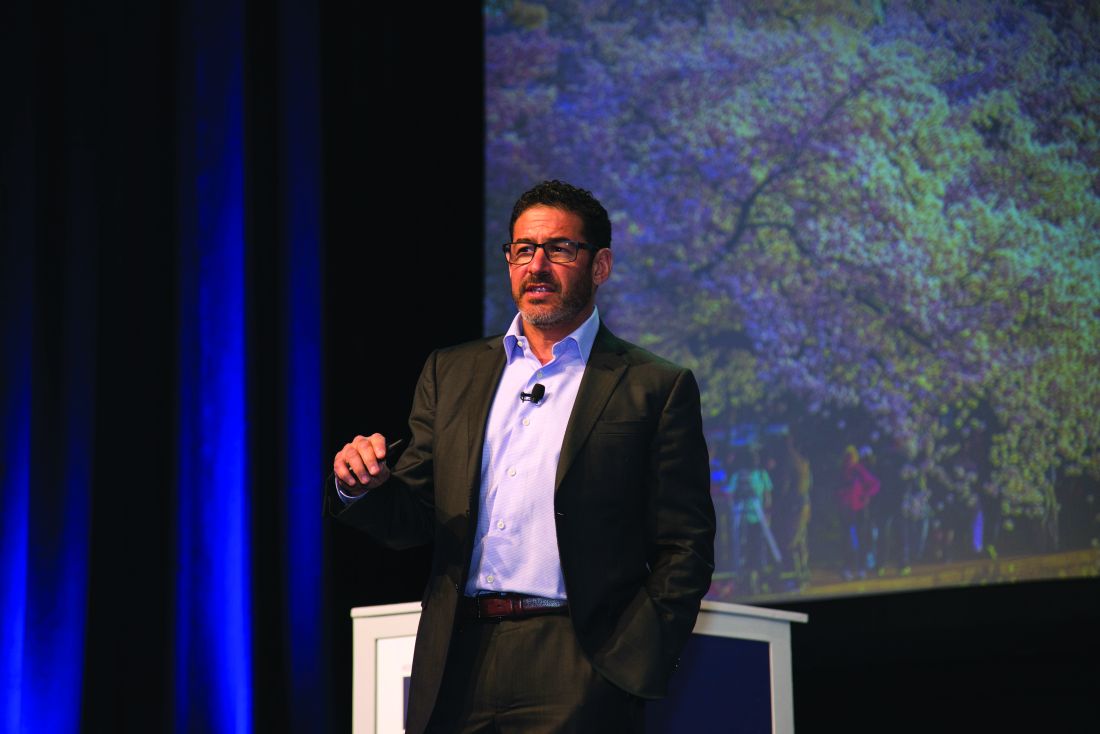
“You’re in exactly the right place in exactly the right specialty to make an enormous difference for our country, which desperately needs an upgrade in terms of how we approach keeping people well and then taking care of people when they’re sick in a superefficient as well as independent fashion,” said Dr. Harrison, president and CEO of Intermountain Healthcare, based in Salt Lake City.
Hospital medicine, hospitalists, and the health care system in general are at an inflection point, and leading change in a positive fashion is the “single core competency” attendees need as health care transitions toward value-based care. This means moving away from a volume-based care model and asking hard questions about whether providers are doing the right things for patients, said Dr. Harrison at the Annual Conference of the Society of Hospital Medicine.
“It’s going to require humility, risk taking, and a desire to truly serve others if we’re going to change the paradigm for health care delivery,” he added.
About one-third of health care that providers deliver is redundant, which costs the United States approximately $1 trillion per year, Dr. Harrison noted. “There’s plenty of money in American health care; it’s just being misspent.”
Health care is “expensive, not consumer centric, and provides uneven quality,” which has spurred businesses like Google and Amazon to try to change the model. Other trends in the health care industry are an increased focus on mergers and acquisitions, negative growth outlook for hospitals, rural hospitals facing closure, and consumers increasingly demanding transparency in health care in such places as their hospital bills.
“We need to be on our front foot” to adapt to these changes, said Dr. Harrison, which means changing how money is spent in U.S. health care. There is currently a disparity: 10% of a person’s health care comes from hospitals and clinics, while 90% of money spent in U.S. health care is on that 10%. Spending should instead be inverted, focused on population-based health initiatives such as addressing social issues surrounding housing, transportation, and food security.
A crisis is coming for providers and health systems that continue to focus on volume-based care models instead of making hard changes to value-based care, said Dr. Harrison. Population-based health initiatives that should be implemented include lowering the cost of care by shifting to outpatient care models and lowering insurance premiums.
“It doesn’t matter how technically good you are if people can’t afford what you’re doing,” he said.
Population-based health initiatives also should be modernized to care upstream, fixing the cause of health problems rather than treating the symptoms. The goal, said Dr. Harrison, is a system with end-to-end seamless care, in which providers understand patients’ goals, are intentional about keeping their patients well, and can “ensure seamless handoff” to other caregivers.
Dr. Harrison said the future of hospital medicine is providing acute care in this way, and attendees are uniquely suited to take care of patients not only in the hospital but also at home, as well as providing consultations with colleagues in care environments without hospitalist programs.
“You’re in the absolute perfect place to keep patients in the least-restrictive, least-expensive environment where they can receive superb care,” he said.
Hospitalists are uniquely positioned to be agents of change in the health care system, helping to care for very sick patients as well as identifying cost-efficient ways to keep them well, Marc Harrison, MD, said in his keynote presentation Monday at HM19.

“You’re in exactly the right place in exactly the right specialty to make an enormous difference for our country, which desperately needs an upgrade in terms of how we approach keeping people well and then taking care of people when they’re sick in a superefficient as well as independent fashion,” said Dr. Harrison, president and CEO of Intermountain Healthcare, based in Salt Lake City.
Hospital medicine, hospitalists, and the health care system in general are at an inflection point, and leading change in a positive fashion is the “single core competency” attendees need as health care transitions toward value-based care. This means moving away from a volume-based care model and asking hard questions about whether providers are doing the right things for patients, said Dr. Harrison at the Annual Conference of the Society of Hospital Medicine.
“It’s going to require humility, risk taking, and a desire to truly serve others if we’re going to change the paradigm for health care delivery,” he added.
About one-third of health care that providers deliver is redundant, which costs the United States approximately $1 trillion per year, Dr. Harrison noted. “There’s plenty of money in American health care; it’s just being misspent.”
Health care is “expensive, not consumer centric, and provides uneven quality,” which has spurred businesses like Google and Amazon to try to change the model. Other trends in the health care industry are an increased focus on mergers and acquisitions, negative growth outlook for hospitals, rural hospitals facing closure, and consumers increasingly demanding transparency in health care in such places as their hospital bills.
“We need to be on our front foot” to adapt to these changes, said Dr. Harrison, which means changing how money is spent in U.S. health care. There is currently a disparity: 10% of a person’s health care comes from hospitals and clinics, while 90% of money spent in U.S. health care is on that 10%. Spending should instead be inverted, focused on population-based health initiatives such as addressing social issues surrounding housing, transportation, and food security.
A crisis is coming for providers and health systems that continue to focus on volume-based care models instead of making hard changes to value-based care, said Dr. Harrison. Population-based health initiatives that should be implemented include lowering the cost of care by shifting to outpatient care models and lowering insurance premiums.
“It doesn’t matter how technically good you are if people can’t afford what you’re doing,” he said.
Population-based health initiatives also should be modernized to care upstream, fixing the cause of health problems rather than treating the symptoms. The goal, said Dr. Harrison, is a system with end-to-end seamless care, in which providers understand patients’ goals, are intentional about keeping their patients well, and can “ensure seamless handoff” to other caregivers.
Dr. Harrison said the future of hospital medicine is providing acute care in this way, and attendees are uniquely suited to take care of patients not only in the hospital but also at home, as well as providing consultations with colleagues in care environments without hospitalist programs.
“You’re in the absolute perfect place to keep patients in the least-restrictive, least-expensive environment where they can receive superb care,” he said.
Hospitalists are uniquely positioned to be agents of change in the health care system, helping to care for very sick patients as well as identifying cost-efficient ways to keep them well, Marc Harrison, MD, said in his keynote presentation Monday at HM19.

“You’re in exactly the right place in exactly the right specialty to make an enormous difference for our country, which desperately needs an upgrade in terms of how we approach keeping people well and then taking care of people when they’re sick in a superefficient as well as independent fashion,” said Dr. Harrison, president and CEO of Intermountain Healthcare, based in Salt Lake City.
Hospital medicine, hospitalists, and the health care system in general are at an inflection point, and leading change in a positive fashion is the “single core competency” attendees need as health care transitions toward value-based care. This means moving away from a volume-based care model and asking hard questions about whether providers are doing the right things for patients, said Dr. Harrison at the Annual Conference of the Society of Hospital Medicine.
“It’s going to require humility, risk taking, and a desire to truly serve others if we’re going to change the paradigm for health care delivery,” he added.
About one-third of health care that providers deliver is redundant, which costs the United States approximately $1 trillion per year, Dr. Harrison noted. “There’s plenty of money in American health care; it’s just being misspent.”
Health care is “expensive, not consumer centric, and provides uneven quality,” which has spurred businesses like Google and Amazon to try to change the model. Other trends in the health care industry are an increased focus on mergers and acquisitions, negative growth outlook for hospitals, rural hospitals facing closure, and consumers increasingly demanding transparency in health care in such places as their hospital bills.
“We need to be on our front foot” to adapt to these changes, said Dr. Harrison, which means changing how money is spent in U.S. health care. There is currently a disparity: 10% of a person’s health care comes from hospitals and clinics, while 90% of money spent in U.S. health care is on that 10%. Spending should instead be inverted, focused on population-based health initiatives such as addressing social issues surrounding housing, transportation, and food security.
A crisis is coming for providers and health systems that continue to focus on volume-based care models instead of making hard changes to value-based care, said Dr. Harrison. Population-based health initiatives that should be implemented include lowering the cost of care by shifting to outpatient care models and lowering insurance premiums.
“It doesn’t matter how technically good you are if people can’t afford what you’re doing,” he said.
Population-based health initiatives also should be modernized to care upstream, fixing the cause of health problems rather than treating the symptoms. The goal, said Dr. Harrison, is a system with end-to-end seamless care, in which providers understand patients’ goals, are intentional about keeping their patients well, and can “ensure seamless handoff” to other caregivers.
Dr. Harrison said the future of hospital medicine is providing acute care in this way, and attendees are uniquely suited to take care of patients not only in the hospital but also at home, as well as providing consultations with colleagues in care environments without hospitalist programs.
“You’re in the absolute perfect place to keep patients in the least-restrictive, least-expensive environment where they can receive superb care,” he said.
Can intraputamenal infusions of GDNF treat Parkinson’s disease?
researchers reported. The investigational therapy, delivered through a skull-mounted port, was well tolerated in a 40-week, randomized, controlled trial and a 40-week, open-label extension.
Neither study met its primary endpoint, but post hoc analyses suggest possible clinical benefits. In addition, PET imaging after the 40-week, randomized trial found significantly increased 18F-DOPA uptake in patients who received GDNF. The randomized trial was published in the March 2019 issue of Brain; data from the open-label extension were published online ahead of print Feb. 26, 2019, in the Journal of Parkinson’s Disease.
“The spatial and relative magnitude of the improvement in the brain scans is beyond anything seen previously in trials of surgically delivered growth-factor treatments for Parkinson’s [disease],” said principal investigator Alan L. Whone, MBChB, PhD, of the University of Bristol (England) and North Bristol National Health Service Trust. “This represents some of the most compelling evidence yet that we may have a means to possibly reawaken and restore the dopamine brain cells that are gradually destroyed in Parkinson’s [disease].”
Nevertheless, the trial did not confirm clinical benefits. The hypothesis that growth factors can benefit patients with Parkinson’s disease may be incorrect, the researchers acknowledged. It also is possible that the hypothesis is valid and that a trial with a higher GDNF dose, longer treatment duration, patients with an earlier disease stage, or different outcome measures would yield positive results. GDNF warrants further study, they wrote.
The findings could have implications for other neurologic disorders as well.
“This trial has shown that we can safely and repeatedly infuse drugs directly into patients’ brains over months or years. This is a significant breakthrough in our ability to treat neurologic conditions ... because most drugs that might work cannot cross from the bloodstream into the brain,” said Steven Gill, MB, MS. Mr. Gill, of the North Bristol NHS Trust and the U.K.-based engineering firm Renishaw, designed the convection-enhanced delivery system used in the studies.
A neurotrophic protein
GDNF has neurorestorative and neuroprotective effects in animal models of Parkinson’s disease. In open-label studies, continuous, low-rate intraputamenal administration of GDNF has shown signs of potential efficacy, but a placebo-controlled trial did not replicate clinical benefits. In the present studies, the researchers assessed intermittent GDNF administration using convection-enhanced delivery, which can achieve wider and more even distribution of GDNF, compared with the previous approach.
The researchers conducted a single-center, randomized, double-blind, placebo-controlled trial to study this novel administration approach. Patients were aged 35-75 years, had motor symptoms for at least 5 years, and had moderate disease severity in the off state (that is, Hoehn and Yahr stage 2-3 and Unified Parkinson’s Disease Rating Scale motor score–part III [UPDRS-III] of 25-45).
In a pilot stage of the trial, six patients were randomized 2:1 to receive GDNF (120 mcg per putamen) or placebo. In the primary stage, another 35 patients were randomized 1:1 to GDNF or placebo. The primary outcome was the percentage change from baseline to week 40 in the off-state UPDRS-III among patients from the primary stage of the trial. Further analyses included all 41 patients from the pilot and primary stages.
Patients in the primary analysis had a mean age of 56.4 years and mean disease duration of 10.9 years. About half were female.
Results on primary and secondary clinical endpoints did not significantly differ between the groups. Average off state UPDRS motor score decreased by 17.3 in the active treatment group, compared with 11.8 in the placebo group.
A post hoc analysis, however, found that nine patients (43%) in the active-treatment group had a large, clinically important motor improvement of 10 or more points in the off state, whereas no placebo patients did. These “10-point responders in the GDNF group are a potential focus of interest; however, as this is a post hoc finding we would not wish to overinterpret its meaning,” Dr. Whone and his colleagues wrote. Among patients who received GDNF, PET imaging demonstrated significantly increased 18F-DOPA uptake throughout the putamen, ranging from a 25% increase in the left anterior putamen to a 100% increase in both posterior putamena, whereas patients who received placebo did not have significantly increased uptake.
No drug-related serious adverse events were reported. “The majority of device-related adverse events were port site associated, most commonly local hypertrophic scarring or infections, amenable to antibiotics,” the investigators wrote. “The frequency of these declined during the trial as surgical and device handling experience improved.”
Open-label extension
By week 80, when all participants had received GDNF, both groups showed moderate to large improvement in symptoms, compared with baseline. From baseline to week 80, percentage change in UPDRS motor score in the off state did not significantly differ between patients who received GDNF for 80 weeks and patients who received placebo followed by GDNF (26.7% vs. 27.6%). Secondary endpoints also did not differ between the groups. Treatment compliance was 97.8%; no patients discontinued the study.
The trials were funded by Parkinson’s UK with support from the Cure Parkinson’s Trust and in association with the North Bristol NHS Trust. GDNF and additional resources and funding were provided by MedGenesis Therapeutix, which owns the license for GDNF and received funding from the Michael J. Fox Foundation for Parkinson’s Research. Renishaw manufactured the convection-enhanced delivery device on behalf of North Bristol NHS Trust. The Gatsby Foundation provided a 3T MRI scanner. Some study authors are employed by and have shares or share options with MedGenesis Therapeutix. Other authors are employees of Renishaw. Dr. Gill is Renishaw’s medical director and may have a future royalty share from the drug delivery system that he invented.
SOURCES: Whone AL et al. Brain. 2019 Feb 26. doi: 10.1093/brain/awz023; Whone AL et al. J Parkinsons Dis. 2019 Feb 26. doi: 10.3233/JPD-191576.
researchers reported. The investigational therapy, delivered through a skull-mounted port, was well tolerated in a 40-week, randomized, controlled trial and a 40-week, open-label extension.
Neither study met its primary endpoint, but post hoc analyses suggest possible clinical benefits. In addition, PET imaging after the 40-week, randomized trial found significantly increased 18F-DOPA uptake in patients who received GDNF. The randomized trial was published in the March 2019 issue of Brain; data from the open-label extension were published online ahead of print Feb. 26, 2019, in the Journal of Parkinson’s Disease.
“The spatial and relative magnitude of the improvement in the brain scans is beyond anything seen previously in trials of surgically delivered growth-factor treatments for Parkinson’s [disease],” said principal investigator Alan L. Whone, MBChB, PhD, of the University of Bristol (England) and North Bristol National Health Service Trust. “This represents some of the most compelling evidence yet that we may have a means to possibly reawaken and restore the dopamine brain cells that are gradually destroyed in Parkinson’s [disease].”
Nevertheless, the trial did not confirm clinical benefits. The hypothesis that growth factors can benefit patients with Parkinson’s disease may be incorrect, the researchers acknowledged. It also is possible that the hypothesis is valid and that a trial with a higher GDNF dose, longer treatment duration, patients with an earlier disease stage, or different outcome measures would yield positive results. GDNF warrants further study, they wrote.
The findings could have implications for other neurologic disorders as well.
“This trial has shown that we can safely and repeatedly infuse drugs directly into patients’ brains over months or years. This is a significant breakthrough in our ability to treat neurologic conditions ... because most drugs that might work cannot cross from the bloodstream into the brain,” said Steven Gill, MB, MS. Mr. Gill, of the North Bristol NHS Trust and the U.K.-based engineering firm Renishaw, designed the convection-enhanced delivery system used in the studies.
A neurotrophic protein
GDNF has neurorestorative and neuroprotective effects in animal models of Parkinson’s disease. In open-label studies, continuous, low-rate intraputamenal administration of GDNF has shown signs of potential efficacy, but a placebo-controlled trial did not replicate clinical benefits. In the present studies, the researchers assessed intermittent GDNF administration using convection-enhanced delivery, which can achieve wider and more even distribution of GDNF, compared with the previous approach.
The researchers conducted a single-center, randomized, double-blind, placebo-controlled trial to study this novel administration approach. Patients were aged 35-75 years, had motor symptoms for at least 5 years, and had moderate disease severity in the off state (that is, Hoehn and Yahr stage 2-3 and Unified Parkinson’s Disease Rating Scale motor score–part III [UPDRS-III] of 25-45).
In a pilot stage of the trial, six patients were randomized 2:1 to receive GDNF (120 mcg per putamen) or placebo. In the primary stage, another 35 patients were randomized 1:1 to GDNF or placebo. The primary outcome was the percentage change from baseline to week 40 in the off-state UPDRS-III among patients from the primary stage of the trial. Further analyses included all 41 patients from the pilot and primary stages.
Patients in the primary analysis had a mean age of 56.4 years and mean disease duration of 10.9 years. About half were female.
Results on primary and secondary clinical endpoints did not significantly differ between the groups. Average off state UPDRS motor score decreased by 17.3 in the active treatment group, compared with 11.8 in the placebo group.
A post hoc analysis, however, found that nine patients (43%) in the active-treatment group had a large, clinically important motor improvement of 10 or more points in the off state, whereas no placebo patients did. These “10-point responders in the GDNF group are a potential focus of interest; however, as this is a post hoc finding we would not wish to overinterpret its meaning,” Dr. Whone and his colleagues wrote. Among patients who received GDNF, PET imaging demonstrated significantly increased 18F-DOPA uptake throughout the putamen, ranging from a 25% increase in the left anterior putamen to a 100% increase in both posterior putamena, whereas patients who received placebo did not have significantly increased uptake.
No drug-related serious adverse events were reported. “The majority of device-related adverse events were port site associated, most commonly local hypertrophic scarring or infections, amenable to antibiotics,” the investigators wrote. “The frequency of these declined during the trial as surgical and device handling experience improved.”
Open-label extension
By week 80, when all participants had received GDNF, both groups showed moderate to large improvement in symptoms, compared with baseline. From baseline to week 80, percentage change in UPDRS motor score in the off state did not significantly differ between patients who received GDNF for 80 weeks and patients who received placebo followed by GDNF (26.7% vs. 27.6%). Secondary endpoints also did not differ between the groups. Treatment compliance was 97.8%; no patients discontinued the study.
The trials were funded by Parkinson’s UK with support from the Cure Parkinson’s Trust and in association with the North Bristol NHS Trust. GDNF and additional resources and funding were provided by MedGenesis Therapeutix, which owns the license for GDNF and received funding from the Michael J. Fox Foundation for Parkinson’s Research. Renishaw manufactured the convection-enhanced delivery device on behalf of North Bristol NHS Trust. The Gatsby Foundation provided a 3T MRI scanner. Some study authors are employed by and have shares or share options with MedGenesis Therapeutix. Other authors are employees of Renishaw. Dr. Gill is Renishaw’s medical director and may have a future royalty share from the drug delivery system that he invented.
SOURCES: Whone AL et al. Brain. 2019 Feb 26. doi: 10.1093/brain/awz023; Whone AL et al. J Parkinsons Dis. 2019 Feb 26. doi: 10.3233/JPD-191576.
researchers reported. The investigational therapy, delivered through a skull-mounted port, was well tolerated in a 40-week, randomized, controlled trial and a 40-week, open-label extension.
Neither study met its primary endpoint, but post hoc analyses suggest possible clinical benefits. In addition, PET imaging after the 40-week, randomized trial found significantly increased 18F-DOPA uptake in patients who received GDNF. The randomized trial was published in the March 2019 issue of Brain; data from the open-label extension were published online ahead of print Feb. 26, 2019, in the Journal of Parkinson’s Disease.
“The spatial and relative magnitude of the improvement in the brain scans is beyond anything seen previously in trials of surgically delivered growth-factor treatments for Parkinson’s [disease],” said principal investigator Alan L. Whone, MBChB, PhD, of the University of Bristol (England) and North Bristol National Health Service Trust. “This represents some of the most compelling evidence yet that we may have a means to possibly reawaken and restore the dopamine brain cells that are gradually destroyed in Parkinson’s [disease].”
Nevertheless, the trial did not confirm clinical benefits. The hypothesis that growth factors can benefit patients with Parkinson’s disease may be incorrect, the researchers acknowledged. It also is possible that the hypothesis is valid and that a trial with a higher GDNF dose, longer treatment duration, patients with an earlier disease stage, or different outcome measures would yield positive results. GDNF warrants further study, they wrote.
The findings could have implications for other neurologic disorders as well.
“This trial has shown that we can safely and repeatedly infuse drugs directly into patients’ brains over months or years. This is a significant breakthrough in our ability to treat neurologic conditions ... because most drugs that might work cannot cross from the bloodstream into the brain,” said Steven Gill, MB, MS. Mr. Gill, of the North Bristol NHS Trust and the U.K.-based engineering firm Renishaw, designed the convection-enhanced delivery system used in the studies.
A neurotrophic protein
GDNF has neurorestorative and neuroprotective effects in animal models of Parkinson’s disease. In open-label studies, continuous, low-rate intraputamenal administration of GDNF has shown signs of potential efficacy, but a placebo-controlled trial did not replicate clinical benefits. In the present studies, the researchers assessed intermittent GDNF administration using convection-enhanced delivery, which can achieve wider and more even distribution of GDNF, compared with the previous approach.
The researchers conducted a single-center, randomized, double-blind, placebo-controlled trial to study this novel administration approach. Patients were aged 35-75 years, had motor symptoms for at least 5 years, and had moderate disease severity in the off state (that is, Hoehn and Yahr stage 2-3 and Unified Parkinson’s Disease Rating Scale motor score–part III [UPDRS-III] of 25-45).
In a pilot stage of the trial, six patients were randomized 2:1 to receive GDNF (120 mcg per putamen) or placebo. In the primary stage, another 35 patients were randomized 1:1 to GDNF or placebo. The primary outcome was the percentage change from baseline to week 40 in the off-state UPDRS-III among patients from the primary stage of the trial. Further analyses included all 41 patients from the pilot and primary stages.
Patients in the primary analysis had a mean age of 56.4 years and mean disease duration of 10.9 years. About half were female.
Results on primary and secondary clinical endpoints did not significantly differ between the groups. Average off state UPDRS motor score decreased by 17.3 in the active treatment group, compared with 11.8 in the placebo group.
A post hoc analysis, however, found that nine patients (43%) in the active-treatment group had a large, clinically important motor improvement of 10 or more points in the off state, whereas no placebo patients did. These “10-point responders in the GDNF group are a potential focus of interest; however, as this is a post hoc finding we would not wish to overinterpret its meaning,” Dr. Whone and his colleagues wrote. Among patients who received GDNF, PET imaging demonstrated significantly increased 18F-DOPA uptake throughout the putamen, ranging from a 25% increase in the left anterior putamen to a 100% increase in both posterior putamena, whereas patients who received placebo did not have significantly increased uptake.
No drug-related serious adverse events were reported. “The majority of device-related adverse events were port site associated, most commonly local hypertrophic scarring or infections, amenable to antibiotics,” the investigators wrote. “The frequency of these declined during the trial as surgical and device handling experience improved.”
Open-label extension
By week 80, when all participants had received GDNF, both groups showed moderate to large improvement in symptoms, compared with baseline. From baseline to week 80, percentage change in UPDRS motor score in the off state did not significantly differ between patients who received GDNF for 80 weeks and patients who received placebo followed by GDNF (26.7% vs. 27.6%). Secondary endpoints also did not differ between the groups. Treatment compliance was 97.8%; no patients discontinued the study.
The trials were funded by Parkinson’s UK with support from the Cure Parkinson’s Trust and in association with the North Bristol NHS Trust. GDNF and additional resources and funding were provided by MedGenesis Therapeutix, which owns the license for GDNF and received funding from the Michael J. Fox Foundation for Parkinson’s Research. Renishaw manufactured the convection-enhanced delivery device on behalf of North Bristol NHS Trust. The Gatsby Foundation provided a 3T MRI scanner. Some study authors are employed by and have shares or share options with MedGenesis Therapeutix. Other authors are employees of Renishaw. Dr. Gill is Renishaw’s medical director and may have a future royalty share from the drug delivery system that he invented.
SOURCES: Whone AL et al. Brain. 2019 Feb 26. doi: 10.1093/brain/awz023; Whone AL et al. J Parkinsons Dis. 2019 Feb 26. doi: 10.3233/JPD-191576.
Hospital medicine grows globally
Hospital medicine is growing in popularity in some foreign countries, speakers said during Monday afternoon’s session, “International Hospital Medicine in the United Arab Emirates, Brazil and Holland.” The presenters discussed some of the history of hospital medicine in each of those countries as well as some current challenges.
Hospital medicine in the Netherlands started in about 2012, said Marjolein de Boom, MD, a hospitalist at Haaglanden Medical Centre. The country has its own 3-year training program for hospitalists, who first started to work in hospitals in the country in 2015. “It’s a relatively new and young specialty,” said Dr. de Boom, with 39 hospitalists in the country working in 8 of the 80 Dutch hospitals. Another 25 or so hospitalists are in training, “so it’s a growing profession,” she said. A Dutch chapter of SHM has been in place since 2017.
Hospitals in the Netherlands permit physicians to serve as hospitalists in different specialties depending on their needs. For example, Dr. de Boom works in the oncology department, as well as the surgical and trauma surgery units. One challenge has been to get more physicians interested in the hospitalist program because it’s newer and not as well-known, she said.
Hospital medicine in the United Arab Emirates also is a newer concept. The American model of hospital medicine was first introduced to the region in 2014 by the Cleveland Clinic in Abu Dhabi, said Mahmoud Al-Hawamdeh, MD, MBA, SFHM, FACP, chair of hospital medicine at the medical center. “Before that, inpatient hospital care was done by traditional family and internal medicine physicians, general practitioners, and residents,” he said.
There are 43 hospitalists at Cleveland Clinic, Abu Dhabi, said Dr. Al-Hawamdeh. They cover about 50%-60% of inpatient services, as well as handle admissions for vascular surgery, ophthalmology, and some general services; they also comanage postcardiac surgery care, he said. “It has been a tremendous success to implement hospital medicine in the care for the inpatient with improved quality metrics, reduced length of stay, and improved patient satisfaction.”
However, there are some challenges, such as educating patients and families about the role of hospitalists, cultural barriers, and the lack of a postdischarge follow-up network and institutions such as skilled nursing facilities. Dr. Al-Hawamdeh worked with physicians from Johns Hopkins Aramco Healthcare and Hamad Medical Corporation to establish an SHM Middle East chapter in 2016.
In Brazil, hospital medicine started to take hold in 2004, said Guilherme Barcellos, MD, SFHM. At that time, just a few doctors were true hospitalists. Dr. Barcellos helped create two hospitalist societies in the country. Hospitalists balancing multiple jobs is still very common, but decreasing, he said, while hospital employment and medical group participation is increasing.
“It was a high-pressure environment, crying out for efficiency, that drove forward Brazilian hospital medicine,” Dr. Barcellos said, “together with new reimbursement models, surgical redesigns, primary care recognition and structure.”
Some challenges remain in Brazil as well, he said. Fancy private hospitals announce they have hospitalists when they may not. In addition, the role of generalists and subspecialists, and the role of certifications, is not always clear. But hospitalists are gaining a foothold, participating in a Choosing Wisely initiative in the country and organizing several conferences.
Hospital medicine is growing in popularity in some foreign countries, speakers said during Monday afternoon’s session, “International Hospital Medicine in the United Arab Emirates, Brazil and Holland.” The presenters discussed some of the history of hospital medicine in each of those countries as well as some current challenges.
Hospital medicine in the Netherlands started in about 2012, said Marjolein de Boom, MD, a hospitalist at Haaglanden Medical Centre. The country has its own 3-year training program for hospitalists, who first started to work in hospitals in the country in 2015. “It’s a relatively new and young specialty,” said Dr. de Boom, with 39 hospitalists in the country working in 8 of the 80 Dutch hospitals. Another 25 or so hospitalists are in training, “so it’s a growing profession,” she said. A Dutch chapter of SHM has been in place since 2017.
Hospitals in the Netherlands permit physicians to serve as hospitalists in different specialties depending on their needs. For example, Dr. de Boom works in the oncology department, as well as the surgical and trauma surgery units. One challenge has been to get more physicians interested in the hospitalist program because it’s newer and not as well-known, she said.
Hospital medicine in the United Arab Emirates also is a newer concept. The American model of hospital medicine was first introduced to the region in 2014 by the Cleveland Clinic in Abu Dhabi, said Mahmoud Al-Hawamdeh, MD, MBA, SFHM, FACP, chair of hospital medicine at the medical center. “Before that, inpatient hospital care was done by traditional family and internal medicine physicians, general practitioners, and residents,” he said.
There are 43 hospitalists at Cleveland Clinic, Abu Dhabi, said Dr. Al-Hawamdeh. They cover about 50%-60% of inpatient services, as well as handle admissions for vascular surgery, ophthalmology, and some general services; they also comanage postcardiac surgery care, he said. “It has been a tremendous success to implement hospital medicine in the care for the inpatient with improved quality metrics, reduced length of stay, and improved patient satisfaction.”
However, there are some challenges, such as educating patients and families about the role of hospitalists, cultural barriers, and the lack of a postdischarge follow-up network and institutions such as skilled nursing facilities. Dr. Al-Hawamdeh worked with physicians from Johns Hopkins Aramco Healthcare and Hamad Medical Corporation to establish an SHM Middle East chapter in 2016.
In Brazil, hospital medicine started to take hold in 2004, said Guilherme Barcellos, MD, SFHM. At that time, just a few doctors were true hospitalists. Dr. Barcellos helped create two hospitalist societies in the country. Hospitalists balancing multiple jobs is still very common, but decreasing, he said, while hospital employment and medical group participation is increasing.
“It was a high-pressure environment, crying out for efficiency, that drove forward Brazilian hospital medicine,” Dr. Barcellos said, “together with new reimbursement models, surgical redesigns, primary care recognition and structure.”
Some challenges remain in Brazil as well, he said. Fancy private hospitals announce they have hospitalists when they may not. In addition, the role of generalists and subspecialists, and the role of certifications, is not always clear. But hospitalists are gaining a foothold, participating in a Choosing Wisely initiative in the country and organizing several conferences.
Hospital medicine is growing in popularity in some foreign countries, speakers said during Monday afternoon’s session, “International Hospital Medicine in the United Arab Emirates, Brazil and Holland.” The presenters discussed some of the history of hospital medicine in each of those countries as well as some current challenges.
Hospital medicine in the Netherlands started in about 2012, said Marjolein de Boom, MD, a hospitalist at Haaglanden Medical Centre. The country has its own 3-year training program for hospitalists, who first started to work in hospitals in the country in 2015. “It’s a relatively new and young specialty,” said Dr. de Boom, with 39 hospitalists in the country working in 8 of the 80 Dutch hospitals. Another 25 or so hospitalists are in training, “so it’s a growing profession,” she said. A Dutch chapter of SHM has been in place since 2017.
Hospitals in the Netherlands permit physicians to serve as hospitalists in different specialties depending on their needs. For example, Dr. de Boom works in the oncology department, as well as the surgical and trauma surgery units. One challenge has been to get more physicians interested in the hospitalist program because it’s newer and not as well-known, she said.
Hospital medicine in the United Arab Emirates also is a newer concept. The American model of hospital medicine was first introduced to the region in 2014 by the Cleveland Clinic in Abu Dhabi, said Mahmoud Al-Hawamdeh, MD, MBA, SFHM, FACP, chair of hospital medicine at the medical center. “Before that, inpatient hospital care was done by traditional family and internal medicine physicians, general practitioners, and residents,” he said.
There are 43 hospitalists at Cleveland Clinic, Abu Dhabi, said Dr. Al-Hawamdeh. They cover about 50%-60% of inpatient services, as well as handle admissions for vascular surgery, ophthalmology, and some general services; they also comanage postcardiac surgery care, he said. “It has been a tremendous success to implement hospital medicine in the care for the inpatient with improved quality metrics, reduced length of stay, and improved patient satisfaction.”
However, there are some challenges, such as educating patients and families about the role of hospitalists, cultural barriers, and the lack of a postdischarge follow-up network and institutions such as skilled nursing facilities. Dr. Al-Hawamdeh worked with physicians from Johns Hopkins Aramco Healthcare and Hamad Medical Corporation to establish an SHM Middle East chapter in 2016.
In Brazil, hospital medicine started to take hold in 2004, said Guilherme Barcellos, MD, SFHM. At that time, just a few doctors were true hospitalists. Dr. Barcellos helped create two hospitalist societies in the country. Hospitalists balancing multiple jobs is still very common, but decreasing, he said, while hospital employment and medical group participation is increasing.
“It was a high-pressure environment, crying out for efficiency, that drove forward Brazilian hospital medicine,” Dr. Barcellos said, “together with new reimbursement models, surgical redesigns, primary care recognition and structure.”
Some challenges remain in Brazil as well, he said. Fancy private hospitals announce they have hospitalists when they may not. In addition, the role of generalists and subspecialists, and the role of certifications, is not always clear. But hospitalists are gaining a foothold, participating in a Choosing Wisely initiative in the country and organizing several conferences.
In transgender care, questions are the answer
New York OBGYN Zoe I. Rodriguez, MD, a pioneer in the care of transgender people, has witnessed a remarkable evolution in medicine.
Years ago, providers knew little to nothing about the unique needs of transgender patients. Now, Dr. Rodriguez said, “there’s tremendous interest in being able to competently treat and address transgender individuals.”
But increased awareness has come with a dose of worry. Providers are often afraid they’ll say or do the wrong thing.
Dr. Rodriguez, who is an assistant professor at the Icahn School of Medicine at Mount Sinai, New York, will help hospitalists gain confidence in treating transgender patients at an HM19 session on Tuesday. “I hope to eliminate this element of fear,” she said. “It’s just really about treating people with respect and dignity and having the knowledge to care for them appropriately.”
The United States is home to an estimated 1.4 million transgender people, and every one has a preferred name and preferred pronouns. It’s crucial for physicians to understand name and pronoun preferences and use them, Dr. Rodriguez said.
At her practice, an intake form asks patients how they wish to be addressed. “I know this information by the time I walk into the exam room,” she said.
For hospitalists, she said, getting this information beforehand may not be possible. In that case, she said, ask questions of the patient and don’t be afraid to get it wrong.
“Mistakes happen all the time,” Dr. Rodriguez said. “People will correct you if you misgender them or call them other than their preferred name. As long as the mistakes are not willful, apologize and move on.”
It’s also important to understand the special needs that transgender patients may – or may not – have. For example, not every transgender patient takes hormones. Even if a patient does, the hormones may not affect as many body processes as you might assume, Dr. Rodriguez said.
Also, not every transgender person has had surgery. However, it can be helpful to understand what surgery entails. “If they get their surgery done in Thailand, a popular destination, and they need treatment in Topeka for an issue related to their surgery, it would be good for the hospitalist to understand what’s done during the surgery.”
In her session, Dr. Rodriguez will also talk about creating an LGBT-friendly environment. “These patients are already feeling very vulnerable and marginalized within these vast health systems,” she said. “It makes a big difference to know that someone is there and gets it.”
Dr. Rodriguez also plans to emphasize the importance of staying aware and up to date about transgender issues. “It’s a continuum,” she said. “There will be more evolution as people come up with new terminologies and words to describe their gender expression and identity. It will be crucially important for physicians to be aware and respectful.”
What Hospitalists Need to Know About Caring for Transgender Patients
Tuesday, 3:50 - 4:30 p.m.
Maryland A/1-3
New York OBGYN Zoe I. Rodriguez, MD, a pioneer in the care of transgender people, has witnessed a remarkable evolution in medicine.
Years ago, providers knew little to nothing about the unique needs of transgender patients. Now, Dr. Rodriguez said, “there’s tremendous interest in being able to competently treat and address transgender individuals.”
But increased awareness has come with a dose of worry. Providers are often afraid they’ll say or do the wrong thing.
Dr. Rodriguez, who is an assistant professor at the Icahn School of Medicine at Mount Sinai, New York, will help hospitalists gain confidence in treating transgender patients at an HM19 session on Tuesday. “I hope to eliminate this element of fear,” she said. “It’s just really about treating people with respect and dignity and having the knowledge to care for them appropriately.”
The United States is home to an estimated 1.4 million transgender people, and every one has a preferred name and preferred pronouns. It’s crucial for physicians to understand name and pronoun preferences and use them, Dr. Rodriguez said.
At her practice, an intake form asks patients how they wish to be addressed. “I know this information by the time I walk into the exam room,” she said.
For hospitalists, she said, getting this information beforehand may not be possible. In that case, she said, ask questions of the patient and don’t be afraid to get it wrong.
“Mistakes happen all the time,” Dr. Rodriguez said. “People will correct you if you misgender them or call them other than their preferred name. As long as the mistakes are not willful, apologize and move on.”
It’s also important to understand the special needs that transgender patients may – or may not – have. For example, not every transgender patient takes hormones. Even if a patient does, the hormones may not affect as many body processes as you might assume, Dr. Rodriguez said.
Also, not every transgender person has had surgery. However, it can be helpful to understand what surgery entails. “If they get their surgery done in Thailand, a popular destination, and they need treatment in Topeka for an issue related to their surgery, it would be good for the hospitalist to understand what’s done during the surgery.”
In her session, Dr. Rodriguez will also talk about creating an LGBT-friendly environment. “These patients are already feeling very vulnerable and marginalized within these vast health systems,” she said. “It makes a big difference to know that someone is there and gets it.”
Dr. Rodriguez also plans to emphasize the importance of staying aware and up to date about transgender issues. “It’s a continuum,” she said. “There will be more evolution as people come up with new terminologies and words to describe their gender expression and identity. It will be crucially important for physicians to be aware and respectful.”
What Hospitalists Need to Know About Caring for Transgender Patients
Tuesday, 3:50 - 4:30 p.m.
Maryland A/1-3
New York OBGYN Zoe I. Rodriguez, MD, a pioneer in the care of transgender people, has witnessed a remarkable evolution in medicine.
Years ago, providers knew little to nothing about the unique needs of transgender patients. Now, Dr. Rodriguez said, “there’s tremendous interest in being able to competently treat and address transgender individuals.”
But increased awareness has come with a dose of worry. Providers are often afraid they’ll say or do the wrong thing.
Dr. Rodriguez, who is an assistant professor at the Icahn School of Medicine at Mount Sinai, New York, will help hospitalists gain confidence in treating transgender patients at an HM19 session on Tuesday. “I hope to eliminate this element of fear,” she said. “It’s just really about treating people with respect and dignity and having the knowledge to care for them appropriately.”
The United States is home to an estimated 1.4 million transgender people, and every one has a preferred name and preferred pronouns. It’s crucial for physicians to understand name and pronoun preferences and use them, Dr. Rodriguez said.
At her practice, an intake form asks patients how they wish to be addressed. “I know this information by the time I walk into the exam room,” she said.
For hospitalists, she said, getting this information beforehand may not be possible. In that case, she said, ask questions of the patient and don’t be afraid to get it wrong.
“Mistakes happen all the time,” Dr. Rodriguez said. “People will correct you if you misgender them or call them other than their preferred name. As long as the mistakes are not willful, apologize and move on.”
It’s also important to understand the special needs that transgender patients may – or may not – have. For example, not every transgender patient takes hormones. Even if a patient does, the hormones may not affect as many body processes as you might assume, Dr. Rodriguez said.
Also, not every transgender person has had surgery. However, it can be helpful to understand what surgery entails. “If they get their surgery done in Thailand, a popular destination, and they need treatment in Topeka for an issue related to their surgery, it would be good for the hospitalist to understand what’s done during the surgery.”
In her session, Dr. Rodriguez will also talk about creating an LGBT-friendly environment. “These patients are already feeling very vulnerable and marginalized within these vast health systems,” she said. “It makes a big difference to know that someone is there and gets it.”
Dr. Rodriguez also plans to emphasize the importance of staying aware and up to date about transgender issues. “It’s a continuum,” she said. “There will be more evolution as people come up with new terminologies and words to describe their gender expression and identity. It will be crucially important for physicians to be aware and respectful.”
What Hospitalists Need to Know About Caring for Transgender Patients
Tuesday, 3:50 - 4:30 p.m.
Maryland A/1-3
MIPS: Nearly 20% of small/solo practices took a pay cut in first year
Most clinicians participating in the Quality Payment Program’s Merit-Based Incentive Payment System (MIPS) received some kind of positive payment adjustment, with small and solo practices fairing not so well.
Overall, 93% of the 1.1 million clinicians who participated in 2017 received a pay bump, according to data released by the Centers for Medicare & Medicaid Services. Of those, about 755,000 (71%) received an exceptional performance payment adjustment of 1.88% and about 230,000 (22%) received a smaller adjustment of 0.2%. About 21,000 (2%) received no adjustment and nearly 52,000 (5%) saw their Medicare reimbursements cut by 4%.
The majority of those receiving pay cuts – about 43,000 (83%) – were in small or solo practices. About one in five participating clinicians in small or solo practices took a pay cut, according to CMS data.
“We weren’t surprised there at all,” Brian Outland, director of regulatory affairs at the American College of Physicians, said in an interview. “We felt that this was the way things were going to go, that small practices would be the ones in the negative.”
Less than half of participants in small or solo practices (44%, or about 101,000) received the exceptional performance bonus of 1.88%, while another approximately 68,000 (30%) received the 0.2% positive adjustment. About 18,000 (8%) received no adjustment.
The imbalance between large and small practices reveals a fundamental design flaw in the MIPS program, Mr. Outland noted.
“This program as presently designed does not certainly create an even playing field for large and small practices,” he said. “We think they need to simplify the MIPS program and make it easier for these smaller practices to be able to comply with the requirements and lessen the performance gap between large and small practices.”
Unless changes are made to help smaller practices perform better, “we feel this is going to continue in the future,” he added.
Outcomes for rural participants closely mirrored the national figures, with 65% (about 106,000) receiving the exceptional performance bonus of 1.88%, 28% (about 46,000) receiving 0.2% adjustment, 6% (about 9,300) receiving the 4% cut, and 1% (about 2,500) receiving no adjustment at all.
Clinicians in small and solo practices “still face challenges to full participation, which is why we will continue to provide direct technical assistance to these clinicians through the Small, Underserved, and Rural Support initiative to help alleviate barriers and create pathways for improvement and success,” CMS officials noted in the report.
SOURCE: Centers for Medicare & Medicaid Services. 2017 QPP Experience Report.
Most clinicians participating in the Quality Payment Program’s Merit-Based Incentive Payment System (MIPS) received some kind of positive payment adjustment, with small and solo practices fairing not so well.
Overall, 93% of the 1.1 million clinicians who participated in 2017 received a pay bump, according to data released by the Centers for Medicare & Medicaid Services. Of those, about 755,000 (71%) received an exceptional performance payment adjustment of 1.88% and about 230,000 (22%) received a smaller adjustment of 0.2%. About 21,000 (2%) received no adjustment and nearly 52,000 (5%) saw their Medicare reimbursements cut by 4%.
The majority of those receiving pay cuts – about 43,000 (83%) – were in small or solo practices. About one in five participating clinicians in small or solo practices took a pay cut, according to CMS data.
“We weren’t surprised there at all,” Brian Outland, director of regulatory affairs at the American College of Physicians, said in an interview. “We felt that this was the way things were going to go, that small practices would be the ones in the negative.”
Less than half of participants in small or solo practices (44%, or about 101,000) received the exceptional performance bonus of 1.88%, while another approximately 68,000 (30%) received the 0.2% positive adjustment. About 18,000 (8%) received no adjustment.
The imbalance between large and small practices reveals a fundamental design flaw in the MIPS program, Mr. Outland noted.
“This program as presently designed does not certainly create an even playing field for large and small practices,” he said. “We think they need to simplify the MIPS program and make it easier for these smaller practices to be able to comply with the requirements and lessen the performance gap between large and small practices.”
Unless changes are made to help smaller practices perform better, “we feel this is going to continue in the future,” he added.
Outcomes for rural participants closely mirrored the national figures, with 65% (about 106,000) receiving the exceptional performance bonus of 1.88%, 28% (about 46,000) receiving 0.2% adjustment, 6% (about 9,300) receiving the 4% cut, and 1% (about 2,500) receiving no adjustment at all.
Clinicians in small and solo practices “still face challenges to full participation, which is why we will continue to provide direct technical assistance to these clinicians through the Small, Underserved, and Rural Support initiative to help alleviate barriers and create pathways for improvement and success,” CMS officials noted in the report.
SOURCE: Centers for Medicare & Medicaid Services. 2017 QPP Experience Report.
Most clinicians participating in the Quality Payment Program’s Merit-Based Incentive Payment System (MIPS) received some kind of positive payment adjustment, with small and solo practices fairing not so well.
Overall, 93% of the 1.1 million clinicians who participated in 2017 received a pay bump, according to data released by the Centers for Medicare & Medicaid Services. Of those, about 755,000 (71%) received an exceptional performance payment adjustment of 1.88% and about 230,000 (22%) received a smaller adjustment of 0.2%. About 21,000 (2%) received no adjustment and nearly 52,000 (5%) saw their Medicare reimbursements cut by 4%.
The majority of those receiving pay cuts – about 43,000 (83%) – were in small or solo practices. About one in five participating clinicians in small or solo practices took a pay cut, according to CMS data.
“We weren’t surprised there at all,” Brian Outland, director of regulatory affairs at the American College of Physicians, said in an interview. “We felt that this was the way things were going to go, that small practices would be the ones in the negative.”
Less than half of participants in small or solo practices (44%, or about 101,000) received the exceptional performance bonus of 1.88%, while another approximately 68,000 (30%) received the 0.2% positive adjustment. About 18,000 (8%) received no adjustment.
The imbalance between large and small practices reveals a fundamental design flaw in the MIPS program, Mr. Outland noted.
“This program as presently designed does not certainly create an even playing field for large and small practices,” he said. “We think they need to simplify the MIPS program and make it easier for these smaller practices to be able to comply with the requirements and lessen the performance gap between large and small practices.”
Unless changes are made to help smaller practices perform better, “we feel this is going to continue in the future,” he added.
Outcomes for rural participants closely mirrored the national figures, with 65% (about 106,000) receiving the exceptional performance bonus of 1.88%, 28% (about 46,000) receiving 0.2% adjustment, 6% (about 9,300) receiving the 4% cut, and 1% (about 2,500) receiving no adjustment at all.
Clinicians in small and solo practices “still face challenges to full participation, which is why we will continue to provide direct technical assistance to these clinicians through the Small, Underserved, and Rural Support initiative to help alleviate barriers and create pathways for improvement and success,” CMS officials noted in the report.
SOURCE: Centers for Medicare & Medicaid Services. 2017 QPP Experience Report.
ABIM contests class-action lawsuit, asks judge to dismiss
Attorneys for the American Board of Internal Medicine have asked Judge Robert Kelly of the United States District Court for the Eastern District of Pennsylvania to dismiss a class-action lawsuit against the board’s maintenance of certification (MOC) program.
The legal challenge, filed Dec. 6, 2018, claims that ABIM charges inflated monopoly prices for maintaining certification, that the organization is forcing physicians to purchase MOC, and that ABIM is inducing employers and others to require ABIM certification as a condition of employment.
The four plaintiff-physicians are asking a judge to find ABIM in violation of federal antitrust law and to bar the board from continuing its MOC process. The suit is filed as a class action on behalf of all internists and subspecialists required by ABIM to purchase MOC to maintain their certification. On Jan. 23 of this year, the suit was amended to include racketeering and unjust enrichment claims.
In a motion filed March 18, attorneys for ABIM asserted that the plaintiffs fail to prove that board certification – initial certification and continuing certification – are two separate products that ABIM is unlawfully tying, and for that reason, their antitrust claims are invalid, according to the motion.
“Plaintiffs may disagree with ABIM and members of the medical community on whether ABIM certification provides them value, but their claims have no basis in the law,” Richard J. Baron, MD, ABIM president and CEO said in a statement. “With advances in medical science and technology occurring constantly, periodic assessments are critical to ensure internists are staying current and continuing to meet high performance standards in their field.”
Two other lawsuits challenging MOC, one against the American Board of Psychiatry and Neurology and another against the American Board of Radiology, are ongoing.
More than $200,000 has been raised by doctors and their supporters nationwide through a GoFundMe campaign launched by Practicing Physicians of America to pay for the plaintiffs’ legal costs.
Attorneys for the American Board of Internal Medicine have asked Judge Robert Kelly of the United States District Court for the Eastern District of Pennsylvania to dismiss a class-action lawsuit against the board’s maintenance of certification (MOC) program.
The legal challenge, filed Dec. 6, 2018, claims that ABIM charges inflated monopoly prices for maintaining certification, that the organization is forcing physicians to purchase MOC, and that ABIM is inducing employers and others to require ABIM certification as a condition of employment.
The four plaintiff-physicians are asking a judge to find ABIM in violation of federal antitrust law and to bar the board from continuing its MOC process. The suit is filed as a class action on behalf of all internists and subspecialists required by ABIM to purchase MOC to maintain their certification. On Jan. 23 of this year, the suit was amended to include racketeering and unjust enrichment claims.
In a motion filed March 18, attorneys for ABIM asserted that the plaintiffs fail to prove that board certification – initial certification and continuing certification – are two separate products that ABIM is unlawfully tying, and for that reason, their antitrust claims are invalid, according to the motion.
“Plaintiffs may disagree with ABIM and members of the medical community on whether ABIM certification provides them value, but their claims have no basis in the law,” Richard J. Baron, MD, ABIM president and CEO said in a statement. “With advances in medical science and technology occurring constantly, periodic assessments are critical to ensure internists are staying current and continuing to meet high performance standards in their field.”
Two other lawsuits challenging MOC, one against the American Board of Psychiatry and Neurology and another against the American Board of Radiology, are ongoing.
More than $200,000 has been raised by doctors and their supporters nationwide through a GoFundMe campaign launched by Practicing Physicians of America to pay for the plaintiffs’ legal costs.
Attorneys for the American Board of Internal Medicine have asked Judge Robert Kelly of the United States District Court for the Eastern District of Pennsylvania to dismiss a class-action lawsuit against the board’s maintenance of certification (MOC) program.
The legal challenge, filed Dec. 6, 2018, claims that ABIM charges inflated monopoly prices for maintaining certification, that the organization is forcing physicians to purchase MOC, and that ABIM is inducing employers and others to require ABIM certification as a condition of employment.
The four plaintiff-physicians are asking a judge to find ABIM in violation of federal antitrust law and to bar the board from continuing its MOC process. The suit is filed as a class action on behalf of all internists and subspecialists required by ABIM to purchase MOC to maintain their certification. On Jan. 23 of this year, the suit was amended to include racketeering and unjust enrichment claims.
In a motion filed March 18, attorneys for ABIM asserted that the plaintiffs fail to prove that board certification – initial certification and continuing certification – are two separate products that ABIM is unlawfully tying, and for that reason, their antitrust claims are invalid, according to the motion.
“Plaintiffs may disagree with ABIM and members of the medical community on whether ABIM certification provides them value, but their claims have no basis in the law,” Richard J. Baron, MD, ABIM president and CEO said in a statement. “With advances in medical science and technology occurring constantly, periodic assessments are critical to ensure internists are staying current and continuing to meet high performance standards in their field.”
Two other lawsuits challenging MOC, one against the American Board of Psychiatry and Neurology and another against the American Board of Radiology, are ongoing.
More than $200,000 has been raised by doctors and their supporters nationwide through a GoFundMe campaign launched by Practicing Physicians of America to pay for the plaintiffs’ legal costs.
‘Update in HM’ highlights top research
When Christopher Moriates, MD, SFHM, and Carrie Herzke, MD, SFHM, accepted the opportunity to present the “Update in Hospital Medicine” session at HM19, it was a big moment for both of them.
Not only will they headline one of the most popular sessions at the Annual Conference, but they also will be giving a talk on stage together for the first time. The possibility that it could all go wrong in front of more than 5,000 attendees at HM19 certainly crossed their minds.
“No matter what, it’ll be fun,” said Dr. Moriates, assistant dean for health care value at the University of Texas at Austin.
The aim of Tuesday afternoon’s session is to inform busy hospitalists of what they might have missed over the past year by highlighting the most important papers, from multiple specialties, that affect hospital medicine.
The two presenters may be familiar to hospitalists: Dr. Herzke, associate vice chair for clinical affairs in the department of medicine at Johns Hopkins Medicine in Baltimore, is a member of the SHM Academic Committee, the SHM Mentoring Subcommittee, and the Annual Conference Committee. Dr. Moriates is a regular contributor to The Hospital Leader, the official blog of SHM, and also has a personal connection to the “Update in Hospital Medicine” session.
“I watched with awe as my mentor, Michelle Mourad, MD, presented ‘Update in Hospital Medicine’ on the big stage at National Harbor in 2013,” Dr. Moriates said. “It is hard to imagine that I will be following her footsteps onto that same stage this year.”
Dr. Moriates and Dr. Herzke have spent months preparing for their presentation: Together, they have pored through a year’s worth of literature, narrowing down hundreds of studies to bring attendees the Top 20 papers with an impact on hospital medicine for the session. They each collected articles throughout the year, checking in regularly to outline the themes and rank papers for the session. In January, Dr. Moriates and Dr. Herzke reviewed all the articles they had collected, finalizing the major themes and highlights for the Update.
“The harder part was dropping a few of the articles we had selected in order to make it under an hour,” he said. “We tried to come up with the highlights that all hospitalists should know about, which are most likely to inform their practices over the coming year. And so, if you haven’t picked up a journal in a year, hopefully within an hour, Carrie and I can give you a quick download.”
Attendees familiar with “Update in Hospital Medicine” also will know that the exact details of what is being presented are secret. It is one of the few sessions at HM19 where slides are not published beforehand on the official Annual Conference app. The only way to know the details of the top studies is to attend the session.
“You have to be there to find out,” Dr. Moriates said.
But curiosity should not be the only reason for hospitalists to attend. Dr. Herzke said this year’s “Update in Hospital Medicine” session holds some practice pearls that may surprise attendees.
“We picked out some studies that we think should make people question common practices and consider making changes to how they practice medicine at their home institution, or their home hospital,” she said.
“It’s fair to say there were a number of studies this year that questioned conventional practices or put forth clear evidence that suggests we should be doing things differently in the hospital than the way we currently are doing them, across a number of scenarios,” Dr. Moriates said.
Attendees can expect studies in the fields of infectious disease, cardiology, and hematology to make the Top 20 list of best papers for the session. However, the challenge is always to present clinical pearls that apply to all hospitalists, regardless of where they practice.
“I think one thing about hospitalists is that our practices are very broad based, and we have to be up to date in lots of different fields,” Dr. Moriates said. “And so, we will cover the top literature across an array of fields matching the breadth and diversity of the patients that we take care of as hospitalists.”
Dr. Moriates and Dr. Herzke had no relevant financial conflicts.
Update in Hospital Medicine
Tuesday, 1:00 – 2:00 p.m.
Potomac ABCD
When Christopher Moriates, MD, SFHM, and Carrie Herzke, MD, SFHM, accepted the opportunity to present the “Update in Hospital Medicine” session at HM19, it was a big moment for both of them.
Not only will they headline one of the most popular sessions at the Annual Conference, but they also will be giving a talk on stage together for the first time. The possibility that it could all go wrong in front of more than 5,000 attendees at HM19 certainly crossed their minds.
“No matter what, it’ll be fun,” said Dr. Moriates, assistant dean for health care value at the University of Texas at Austin.
The aim of Tuesday afternoon’s session is to inform busy hospitalists of what they might have missed over the past year by highlighting the most important papers, from multiple specialties, that affect hospital medicine.
The two presenters may be familiar to hospitalists: Dr. Herzke, associate vice chair for clinical affairs in the department of medicine at Johns Hopkins Medicine in Baltimore, is a member of the SHM Academic Committee, the SHM Mentoring Subcommittee, and the Annual Conference Committee. Dr. Moriates is a regular contributor to The Hospital Leader, the official blog of SHM, and also has a personal connection to the “Update in Hospital Medicine” session.
“I watched with awe as my mentor, Michelle Mourad, MD, presented ‘Update in Hospital Medicine’ on the big stage at National Harbor in 2013,” Dr. Moriates said. “It is hard to imagine that I will be following her footsteps onto that same stage this year.”
Dr. Moriates and Dr. Herzke have spent months preparing for their presentation: Together, they have pored through a year’s worth of literature, narrowing down hundreds of studies to bring attendees the Top 20 papers with an impact on hospital medicine for the session. They each collected articles throughout the year, checking in regularly to outline the themes and rank papers for the session. In January, Dr. Moriates and Dr. Herzke reviewed all the articles they had collected, finalizing the major themes and highlights for the Update.
“The harder part was dropping a few of the articles we had selected in order to make it under an hour,” he said. “We tried to come up with the highlights that all hospitalists should know about, which are most likely to inform their practices over the coming year. And so, if you haven’t picked up a journal in a year, hopefully within an hour, Carrie and I can give you a quick download.”
Attendees familiar with “Update in Hospital Medicine” also will know that the exact details of what is being presented are secret. It is one of the few sessions at HM19 where slides are not published beforehand on the official Annual Conference app. The only way to know the details of the top studies is to attend the session.
“You have to be there to find out,” Dr. Moriates said.
But curiosity should not be the only reason for hospitalists to attend. Dr. Herzke said this year’s “Update in Hospital Medicine” session holds some practice pearls that may surprise attendees.
“We picked out some studies that we think should make people question common practices and consider making changes to how they practice medicine at their home institution, or their home hospital,” she said.
“It’s fair to say there were a number of studies this year that questioned conventional practices or put forth clear evidence that suggests we should be doing things differently in the hospital than the way we currently are doing them, across a number of scenarios,” Dr. Moriates said.
Attendees can expect studies in the fields of infectious disease, cardiology, and hematology to make the Top 20 list of best papers for the session. However, the challenge is always to present clinical pearls that apply to all hospitalists, regardless of where they practice.
“I think one thing about hospitalists is that our practices are very broad based, and we have to be up to date in lots of different fields,” Dr. Moriates said. “And so, we will cover the top literature across an array of fields matching the breadth and diversity of the patients that we take care of as hospitalists.”
Dr. Moriates and Dr. Herzke had no relevant financial conflicts.
Update in Hospital Medicine
Tuesday, 1:00 – 2:00 p.m.
Potomac ABCD
When Christopher Moriates, MD, SFHM, and Carrie Herzke, MD, SFHM, accepted the opportunity to present the “Update in Hospital Medicine” session at HM19, it was a big moment for both of them.
Not only will they headline one of the most popular sessions at the Annual Conference, but they also will be giving a talk on stage together for the first time. The possibility that it could all go wrong in front of more than 5,000 attendees at HM19 certainly crossed their minds.
“No matter what, it’ll be fun,” said Dr. Moriates, assistant dean for health care value at the University of Texas at Austin.
The aim of Tuesday afternoon’s session is to inform busy hospitalists of what they might have missed over the past year by highlighting the most important papers, from multiple specialties, that affect hospital medicine.
The two presenters may be familiar to hospitalists: Dr. Herzke, associate vice chair for clinical affairs in the department of medicine at Johns Hopkins Medicine in Baltimore, is a member of the SHM Academic Committee, the SHM Mentoring Subcommittee, and the Annual Conference Committee. Dr. Moriates is a regular contributor to The Hospital Leader, the official blog of SHM, and also has a personal connection to the “Update in Hospital Medicine” session.
“I watched with awe as my mentor, Michelle Mourad, MD, presented ‘Update in Hospital Medicine’ on the big stage at National Harbor in 2013,” Dr. Moriates said. “It is hard to imagine that I will be following her footsteps onto that same stage this year.”
Dr. Moriates and Dr. Herzke have spent months preparing for their presentation: Together, they have pored through a year’s worth of literature, narrowing down hundreds of studies to bring attendees the Top 20 papers with an impact on hospital medicine for the session. They each collected articles throughout the year, checking in regularly to outline the themes and rank papers for the session. In January, Dr. Moriates and Dr. Herzke reviewed all the articles they had collected, finalizing the major themes and highlights for the Update.
“The harder part was dropping a few of the articles we had selected in order to make it under an hour,” he said. “We tried to come up with the highlights that all hospitalists should know about, which are most likely to inform their practices over the coming year. And so, if you haven’t picked up a journal in a year, hopefully within an hour, Carrie and I can give you a quick download.”
Attendees familiar with “Update in Hospital Medicine” also will know that the exact details of what is being presented are secret. It is one of the few sessions at HM19 where slides are not published beforehand on the official Annual Conference app. The only way to know the details of the top studies is to attend the session.
“You have to be there to find out,” Dr. Moriates said.
But curiosity should not be the only reason for hospitalists to attend. Dr. Herzke said this year’s “Update in Hospital Medicine” session holds some practice pearls that may surprise attendees.
“We picked out some studies that we think should make people question common practices and consider making changes to how they practice medicine at their home institution, or their home hospital,” she said.
“It’s fair to say there were a number of studies this year that questioned conventional practices or put forth clear evidence that suggests we should be doing things differently in the hospital than the way we currently are doing them, across a number of scenarios,” Dr. Moriates said.
Attendees can expect studies in the fields of infectious disease, cardiology, and hematology to make the Top 20 list of best papers for the session. However, the challenge is always to present clinical pearls that apply to all hospitalists, regardless of where they practice.
“I think one thing about hospitalists is that our practices are very broad based, and we have to be up to date in lots of different fields,” Dr. Moriates said. “And so, we will cover the top literature across an array of fields matching the breadth and diversity of the patients that we take care of as hospitalists.”
Dr. Moriates and Dr. Herzke had no relevant financial conflicts.
Update in Hospital Medicine
Tuesday, 1:00 – 2:00 p.m.
Potomac ABCD
What’s your favorite aspect of HM19?
Attendees explain what they enjoy about the Annual Conference.

Attendees explain what they enjoy about the Annual Conference.

Attendees explain what they enjoy about the Annual Conference.

